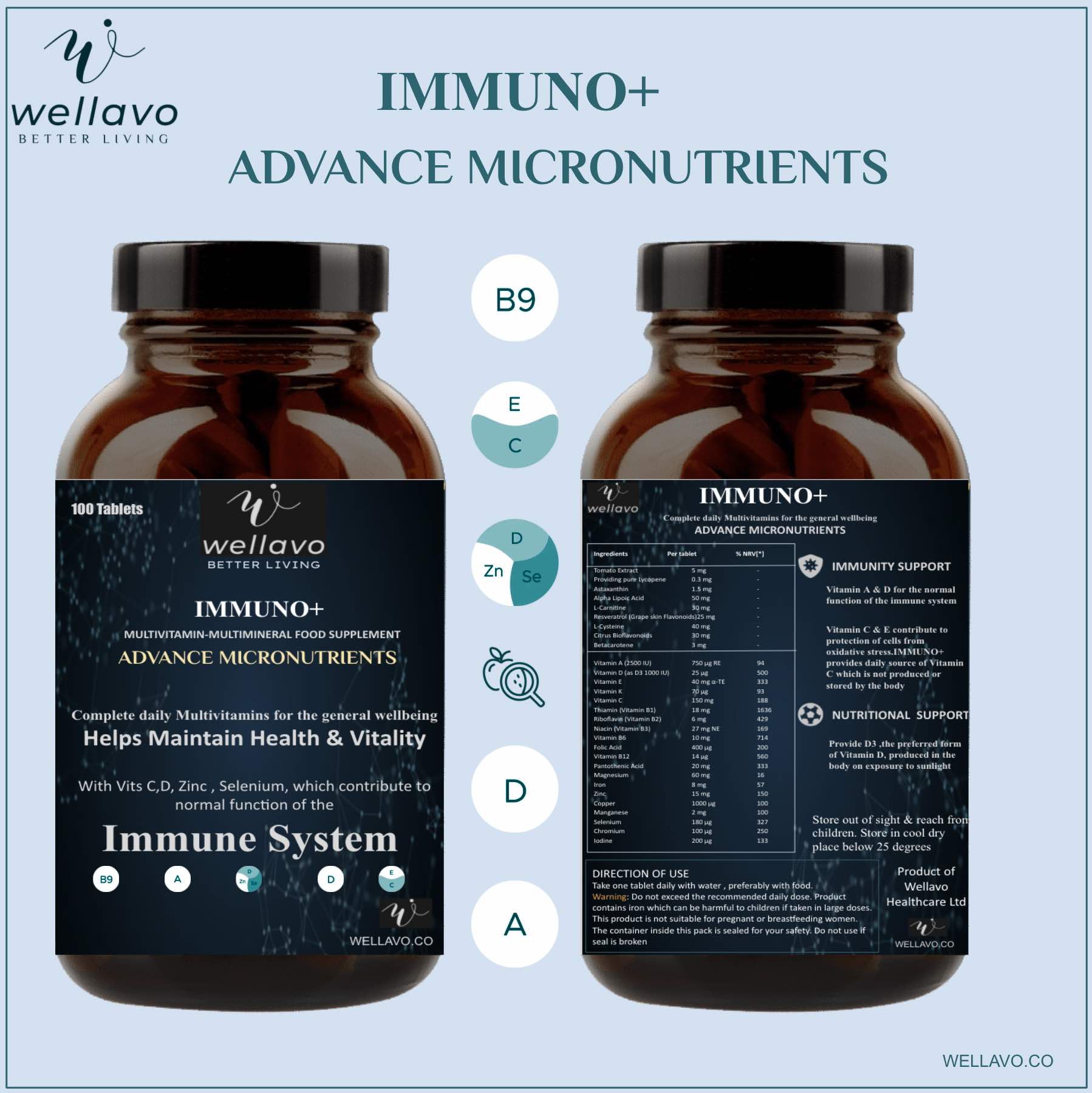Dietary Guidelines by Ayur Times are unbiased recommendations for healthy eating and advise a most favorable diet for us. My recommendations are based on evidence and research studies and my clinical experience.
Note: These Dietary Guidelines are for healthy people. If you suffer from any disease, follow guidelines described in the Healing Diet.
Food Plate Principle
There are 10 important food groups, which are important to keep you healthy.
- Fruits.
- Vegetables.
- Whole Grains.
- Legumes.
- Nuts.
- Seeds.
- Fresh Herbs.
- Spices.
- Water.
- Sunshine.

The above picture displays a simple food plate principle.
| Food Group | Percentage |
| Fruits | 25% |
| Vegetables | 25% |
| Whole Grains | 25% |
| Legumes | 10% |
| Nuts | 10% |
| Seeds | 5% |
In addition to the plate, there are four circles, which represent:
- Fresh Herbs: Eat at least two fresh herbs – fresh leaves of coriander, parsley, dill, mint (all types), fenugreek and Basil (all types) daily.
- Spices: Eat turmeric, ginger, black pepper, long pepper, green cardamom seeds, cinnamon, and cumin seeds daily. Use Asafoetida (Hing) in legume recipes, especially for gas-forming beans. Take other spices occasionally.
- Water: Drink water when you feel thirsty. Take at least three glasses a day.
- Sunshine: Get sunshine for at least 30 minutes daily. It is treated as a food group because it helps in Vitamin D production. It also has some healing benefits.
Supplements: Check the bottom of the article.
Fruits
Recommendations:
- Include a variety of fruits.
- Eat at least 3 different fruits daily.
Standard Serving Size for Fruits
| Fruit Form | 1 Serving Size equal to: |
| Fresh Fruits (except berries) | 150 grams |
| Dried Fruits * | 30 grams |
| Dried Berries | 40 grams |
| Fresh and Frozen Berries | 75 grams |
| Fruit Powder | 15 grams |
| Fruit Strap (Dehydrated Fruit Pulp) | 30 grams |
* Dried fruits include dried apricot, dates, prunes, figs, etc.
Recommended Fruits Servings:
| Age Group (in years) | Daily Recommended Servings |
| 1-2 | 1 Serving |
| 2-3 | 1 ½ Serving |
| 4-8 | 2 Servings |
| 9-11 | 2 ½ Servings |
| 12-14 | 3 Servings |
| 15-18 | 4 Servings |
| 19-50 | 5 Servings |
| 51-70 | 5 Servings |
| 70+ | 4 Servings |
| Pregnant | 5 Servings |
| Lactating | 5 Servings |
Fruit Variety
You can take fruits in the following way to balance the optimum fruit intake.
| Groups | Recommended Daily Servings |
| Group 1 | 20% |
| Group 2 | 30-40% |
| Group 3 | 20% |
| Group 4 | 20-30% |
If you cannot eat fruits from each group daily, you should balance fruits servings over the week
Vegetables
Recommendations:
- Include a variety of vegetables.
- Eat at least 3 different vegetables daily.
- Eat 60% Raw and 40% Cooked: 60% of total vegetable intake should be from non-starchy vegetables and raw uncooked form. 40% should be cooked form. Boiling is the best method to cook vegetables.
- Boil starchy vegetables (e.g. potatoes, yam, butternut, pumpkin, zucchini, etc.), green leafy vegetables (e.g. spinach, beet greens, swiss chard, mustard green, etc.) and other vegetables with high oxalate content. Don’t eat these vegetables in raw form.
Standard Serving Size for Vegetables
| Vegetable Type | 1 Serving Size equal to: |
| Fresh Vegetables | 150 grams |
| Cooked Vegetables | 75 grams |
| Vegetable Juice | 125 ml |
Recommended Vegetable Servings
The following table represents the serving size for fresh (raw uncooked) vegetables.
| Age Group (in years) | Daily Recommended Servings |
| 1-2 | 1 Serving (150 g) |
| 2-3 | 1 ½ Serving (225 g) |
| 4-8 | 2 Servings (300 g) |
| 9-11 | 2 ½ Servings (375 g) |
| 12-14 | 3 Servings (450 g) |
| 15-18 | 4 Servings (600 g) |
| 19-50 | 5 Servings (750 g) |
| 51-70 | 5 Servings (750 g) |
| 70+ | 4 Servings (600 g) |
| Pregnant | 5 Servings (750 g) |
| Lactating | 5 Servings (750 g) |
For cooked vegetables, serving size reduces to half. For example, if raw vegetable serving size is 150 grams, for cooked vegetable, it will be 75 grams.
Whole Grains
Recommendations:
- Variety: Include a variety of whole grains in your diet.
- Intact Whole Grains: Eat more intact whole grains. We recommend eating 75% to 100% of the total grain’s servings in the form of intact whole grains. If it is not possible, eat more than 50% of total grain’s servings in the form of intact whole grains.
- Whole Grain Flour: Eat less food made of grain flour. Flour should contain bran, and it should be made of whole grains. We recommend eating 0 to 25% of total grain’s servings from whole grain flour. If it is not possible, eat less than 50% of total grain’s servings from the whole grain flour. Mix whole grain flour with 10% of bran. For example, mix 1 Kg of Wheat Bran in 10 Kg of whole wheat flour.
- Knead in Vegetable Puree: If you eat chapati, knead whole grain dough with seasonal vegetables (except spinach, swiss green, beet greens, and vegetables with high oxalate content) and their juice. Do not use water for kneading the flour.
- Avoid Refined Grains: Do not eat refined grains and food made of refined grain flour. For example, avoid white rice, white bread, white flatbread, chapati made of white flour etc.
Standard Serving Size for Grains
| Whole Grains | 1 Serving Size equal to: |
| Whole Grains (cooked) in general | ½ cup (approx. 75 g) |
| Millets (Cooked) | ½ cup (approx. 75 g) |
| Chapati or Flat Bread | ½ chapati (approx. 40 g) |
| Bread | 1 slice (approx. 40 g) |
| Brown Rice (Cooked) | ½ cup (approx. 75 g) |
| Barley (Cooked) | ½ cup (approx. 75 g) |
| Quinoa (Cooked) | ½ cup (approx. 75 g) |
| Semolina (Cooked) | ½ cup (approx. 75 g) |
| Buckwheat (Cooked) | ½ cup (approx. 75 g) |
| Pasta (boiled) | ½ cup (approx. 100 g) |
| Popped Popcorn | 3 cups |
| Porridge (boiled in water; thick) | ½ cup (approx. 100- 120 g) |
Recommended Grains Servings
| Age Group | Male | Female |
| 1-3 | 4 servings | 4 servings |
| 4-8 | 4 servings | 4 servings |
| 9-11 | 5 servings | 4 servings |
| 12-13 | 6 servings | 5 servings |
| 14-18 | 7 servings | 7 servings |
| 19-30 | 6 servings | 6 servings |
| 31-50 | 5 servings | 5 servings |
| 51-70 | 5 servings | 4 servings |
| 70+ | 4 servings | 3 servings |
| Pregnant | – | 8 servings |
| Lactating | – | 9 servings |
Legumes
Recommendations:
- Variety: Include a variety of legumes in your diet. Do not eat the same type of legume daily.
- Preference: The preference should be given to mung (green gram), masoor (red lentil), fresh green beans, fresh green peas and edamame.
- Alternate: Legumes has 5 subtypes (Lentils, Beans, Peas, Chickpea and Soy). You should alternate each type. Do not consume same type of legume daily, especially beans.
- Soak: Soaking legumes is particularly important. Never miss soaking. Soak lentils overnight (6-8 hours) before cooking. Soak beans and chickpeas for 24 hours before cooking. In case of beans and chickpeas, change water after every 6 hours and wash 2-3 times. This process eliminates antinutrient compound in the beans and reduces the gas-forming effects.
- Spice up: Add antispasmodic and antiflatulent spices, especially for beans and chickpeas. For example, add cumin seeds, asafoetida, clove, mace, or nutmeg to the legume recipe to avoid gas-forming effects. Asafoetida and cumin seeds are more important than other spices in case of beans.
Note: Nuts, seeds and whole grains are better protein sources than legumes. In the healing phase diet and stabilising phase diet, you should not eat legumes.
Recommended Daily Amount
According to age group, the recommended daily amount for legumes varies. Here is a details:
Standard Serving Size for Legumes
| Type | 1 Serving Size equal to: |
| Cooked Legumes (Lentils, Beans, Chickpea) | ½ cup |
| Fresh Green Pea | 1 cup |
| Cooked Fresh Green Pea | ½ cup |
| Fresh Green Beans | 1 cup |
| Cooked Fresh Green Beans | ½ cup |
| Hummus (Mashed cooked legumes) | ¼ cup |
| Sprouts | 1 cup |
| Edamame | 1 cup |
| Tofu | ½ cup |
Recommended Daily Servings
| Age Group (in years) | Minimum | Maximum |
| 1-2 | ½ serving | 1 serving |
| 2-3 | ¾ serving | 1 ½ serving |
| 4-8 | 1 serving | 2 servings |
| 9-11 | 1 ½ serving | 3 servings |
| 12-14 | 1 ½ serving | 3 servings |
| 15-18 | 1 ½ serving | 3 servings |
| 19-50 | 1 ½ serving | 3 servings |
| 51-70 | 1 ½ serving | 2 servings |
| 70+ | 1 serving | 2 servings |
| Pregnant | 1 ¾ serving | 3 ½ serving |
| Lactating | 1 ½ serving | 3 servings |
- Minimum: If you are also taking nuts in a high amount, less physically active, or exercise less than 30 minutes a day, you should eat legumes in minimum recommended amounts. Alternatively, you can take legumes on alternate days in the maximum recommended amount.
- Maximum: If you suffer from obesity and cardiovascular diseases, you should not take nuts in the recommended amount. Check Nuts’ Guide for more details. In such cases, you should increase legumes intake to the maximum recommended amount. People with high protein needs should also increase the intake of legumes to maximum recommended amount.
Alternating Legumes
| Day 1 | Mung (Green Beans) + Masoor (Red Lentils) |
| Day 2 | Fresh Green Beans |
| Day 3 | Chickpeas |
| Day 4 | Mung (Green Beans) + Masoor (Red Lentils) |
| Day 5 | Edamame |
| Day 6 | Fresh Green Peas |
| Day 7 | Beans (choose one e.g. kidney beans, or black beans) |
Nuts
Recommendations:
- Variety: Include a variety of nuts in your diet. Choose at least 3-5 types of different nuts every day.
- Preference: Give preference to almonds and walnuts. These should be a part of your daily diet. Also, include other two nuts.
- Alternate: Except almonds and walnuts, alternate all other nuts. Choose 2 types of different nuts every day.
- Soak: Soak all types of nuts 6-8 hours before eating. You can also soak nuts overnight.
Recommended Daily Amount
Standard Serving Size for Nuts
| Soaked Nuts | 30 grams (¼ cup) |
| Nut Butter (homemade) | 2 tablespoons |
Recommended Servings for Nuts
| Age Group | Recommended Daily Servings |
| 1-2 | ¼ serving (7.5 grams) |
| 2-3 | 1/3 serving (10 grams) |
| 4-8 | ½ serving (15 grams) |
| 9-11 | ¾ serving (22.5 grams) |
| 12-13 | 1 serving (30 grams) |
| 14-18 | 1 ½ serving (45 grams) |
| 19-50 | 1 ½ serving (45 grams) |
| 51-70 | 1 serving (30 grams) |
| 70+ | ¾ serving (22.5 grams) |
| Pregnant | 1 ½ serving (45 grams) |
| Lactating | 1 ½ serving (45 grams) |
Conditions:
- The above recommendation is for healthy people doing exercise for at least 30 minutes a day.
- If you live a sedentary life, you should not take nuts more than half of the recommended amount.
- If you try to lose weight or suffer from cardiovascular diseases, you should reduce your nut intake. In such cases, you can take soaked almonds and walnuts. Avoid all other nuts. The total nuts intake should not exceed 15 grams per day. You should take more legumes (3 servings of legumes a day).
Seeds
Recommendations:
- Variety: Include a variety of seeds in your diet. Choose at least 2 types of different seeds every day – one from each group of seeds.
- Soak: Soak all types of seeds 6-8 hours before eating. You can also soak seeds overnight.
Recommended Amount for Seeds
| Age Group | Recommended Daily Amount |
| 1-2 | 2.5 g |
| 2-3 | 3.3 g |
| 4-8 | 5 g |
| 9-11 | 8 g |
| 12-14 | 10 g |
| 15-18 | 13 g |
| 19-50 | 15 g (2 tablespoons) |
| 51-70 | 15 g (2 tablespoons) |
| 70+ | 12 g |
| Pregnant | 15 g (2 tablespoons) |
| Lactating | 15 g (2 tablespoons) |
Fresh Herbs
Recommendations:
- Variety: Include a variety of fresh herbs in your diet. Choose at least 2 types of different herbs every day.
- Fresh: These herbs should be fresh. Consume within 3-5 days after picking up from the garden or purchasing from the vegetable market.
- Green: Use green leaves of these herbs as a part of the food.
Recommended Fresh Herbs
You should eat any 2 herbs from the following list:
- Basil (all types).
- Coriander or Cilantro.
- Mint (all types).
- Parsley.
- Curry leaves.
- Dill leaves.
- Fennel (green).
- Giloy.
- Hyssop.
- Oregano.
- Moringa.
- Rosemary.
Standard Serving Size
| Form | 1 Serving Size equal to: |
| Chopped Herbs | 15 grams |
| Herbs Paste | 15 grams |
| Chutney (without salt) | 15 grams |
Recommended Daily Amount
| Age Group (In Year) | Recommended Daily Amount |
| 1-2 | 1/6 serving (2.5 g) |
| 2-3 | 1/3 serving (5 g) |
| 4-8 | ½ serving (7.5 g) |
| 9-11 | ¾ serving (11.25 g) |
| 12-13 | 1 serving (15 g) |
| 15-18 | 1 ½ serving (22.5 g) |
| 19-50 | 2 servings (30 g) |
| 51-70 | 1 ½ serving (22.5 g) |
| 70+ | 1 serving (15 g) |
| Pregnant | 1 ½ serving (22.5 g) |
| Lactating | 1 ½ serving (22.5 g) |
Note: Pregnant woman should take coriander, fennel green, dill leaves, giloy leaves, mint, or moringa. During pregnancy, preference should be given to coriander as the main herb.
Spices
Recommendations:
- Variety: Include a variety of spices in your diet.
- Tolerability: Choose according to your body tolerance. If some spices are not suitable for you, you should not eat.
- Appropriate Amount: Eat in the right amount. Eating less may not be beneficial. Excess intake of some hot spices may cause burning.
- 7 Daily Herbs: Eat Turmeric, Black Pepper, Long Pepper, Ginger, Cumin Seeds, Green Cardamom and Cinnamon daily.
- Weekly Herbs: Any two of Asafoetida, Clove, Fenugreek seeds, Mace, Nutmeg, Saffron and Fennel Seeds.
Water
Recommendations:
- Drink water whenever you feel thirsty.
- Drink lukewarm water during winters.
- Drink water kept in an earthen pot during summers.
- Drink water sip by sip. Do not gulp water in a hurry.
Sunshine
Recommendations:
- Take sunbath daily for at least 30 minutes.
- You can take sunbath any time during the day whenever the sun is tolerable to the skin. Cover the head if taking a sunbath in mid-day.
- Avoid taking sunshine during intense heat.
- Mornings and evenings are the best time to sunbathe but require a longer duration.
Limited Food
You can take the following food in a limited amount, as recommended below:
Limited Salt
Recommendation: You should avoid a high salt diet. You can take up to 2.5 grams (a half teaspoon) of salt daily. It is equal to 1 gram of sodium.
- Recommended Salt Type: Himalayan Pink Salt or Sendha Namak (Rock Salt).
- Acceptable Salt Type: Iodised salt 50% + Himalayan Pink Salt 50% (if you are not taking sea vegetables). But we recommend sea vegetables for iodine instead of iodised salt.
Limited Sea Vegetables
Sea vegetables are important for getting iodine. However, each sea vegetable contains a different amount of iodine content and can also be toxic if taken in excess. For example, kelp contains a huge amount of iodine, which can have damaging effects.
Recommended: Nori, Horsetail tangle, Wakame, Mekabu and Dulse.
| Age Group | Recommended Amount per WEEK |
| 1-2 | 1.5 grams per week |
| 2-3 | 3 grams per week |
| 4-8 | 4.5 grams per week |
| 9-11 | 6 grams per week |
| 12-14 | 9 grams per week |
| 15-18 | 10 grams per week |
| 19-50 | 10 grams per week |
| 51-70 | 10 grams per week |
| 70+ | 10 grams per week |
| Pregnant | 10 grams per week |
| Lactating | 10 grams per week |
The above-recommended amount applies to Wakame, Dulse and Nori and it is weekly recommended amount.
Acceptable: A pinch of Kelp, twice a week.
Restricted: Hijiki and seaweeds containing arsenic in excess.
Note: Before taking sea vegetables, always check iodine and arsenic content.
Alternative to Sea Vegetables: Iodised Salt, as accepted under the limited salt section above.
Restricted Food List
You must avoid the following food groups:
- Milk and Dairy Products: Milk, Butter, Ghee, Cheese, Buttermilk, Yogurt, etc.
- Animal Foods: Eggs, Fish, Meat, etc.
- No Oil: Avoid all kinds of oils. We encourage 100% oil-free diet and take nuts and seeds as an alternative. You should take nuts and seeds daily in the recommended amount. These will help to fulfil the daily requirement of healthy fats. All oils and extracted fats are known to impair the natural function of blood vessels. Oils reduce the ability of blood vessels to relax and dilate normally. Secondly, taking oils is also against “Wholesome Principle” of nature cure.
- Fried Foods: Avoid all types of fried foods (e.g., paratha, French fries, fast foods, etc.).
- Processed Food: Processed food means food is not in its natural form and not cooked at home. It includes foods high in salt and fats, overcooked foods, fried foods, packed snacks, factory-made foods, ready to eat or comfort foods.
- Refined Carbs: Refined carbs are simple carbohydrates from sugars and refined grains. It includes refined flour, white flour, white rice, refined pasta, breakfast cereals, desserts, sweets, sugar, syrups, etc.
- Added Sugar and Sweeteners: All type of sugars and sweeteners except sugar naturally present in food. The alternative to added sugar are fruits – dates, bananas, apples, etc.
- Alcohol: Avoid Alcohol.
- Beverages: All beverages, including packed fruit juice.
Incompatible Foods
- Avoid fruits (except tomatoes) with grains and legumes.
- Avoid citrus fruits with sweet fruits, melons, and vegetables.
- Avoid lemon with cucumber and tomatoes.
- Avoid melons with starchy vegetables and grains. Melons are best to eat alone.
- All fruits and vegetables are incompatible with animal foods. We have not provided much information because we do not recommend animal foods.
Supplements
Recommendations:
- Vitamin B12: Take at least 50 mcg of Cyanocobalamin once a week. We recommend 25 mcg twice a week. Generally, 100 mcg tablets are easily available. So, you can take a quarter (1/4) of tablet twice a week. Check Vitamin B12 Guide for more details.
- Vitamin D: We highly recommend sunbath for Vitamin D and other healing benefits. If you do not get sufficient sunshine, take Vitamin D 7000 IU weekly.
- Ashwagandha + Long Pepper: Take at least 400 mg of Ashwagandha powder and 100 mg of Long Pepper powder daily if you are underweight or have a normal weight (and if no abdominal fat).
- Amla + Long Pepper: Take at least 1000 mg of Amla powder and 100 mg of Long Pepper powder daily if you are overweight or obese or have abdominal fat.
You should not take any other supplements for proteins, multivitamins, and minerals.
Exercise
However, exercise is not part of the food. But its inclusion is necessary here to stay healthy.
Recommendations:
- Do exercise for at least 30 minutes daily.
- Involve in physical activities at least for 120 minutes daily.
Thirty minutes of exercise and 120 minutes of daily involvement in physical activities (e.g. playing) are mandatory. In total, you should be physically active for about 2.5 hours daily.
For more details, Check Healthy Lifestyle Guidelines.
Note:
- The recommended serving sizes are just a general reference and highly recommended values. If you eat less than the recommended amounts, you may experience weakness and weight loss.
- You should eat according to your appetite and digestive capacity. If your body asks more, you can eat more than the recommended amounts.
- The ratio of food group should remain the same. Follow the food plate principle described in this article above – 25% calories from fruits, 25% calories from vegetables, 25% calories from whole grains and 10% calories from legumes, 10% calories from nuts, and 5% calories from seeds.





